|
|
| Madrid | Marbella | Salamanca |
MADRID |
||
 Madrid, capital of
Spain, is located in the heart of the Iberian Peninsula
and in the center of the Castilian plain. It has Spain's largest
population
of approximately 5 million people. Besides being the home of the Spanish
Royal Family, this
cosmopolitan city is a business center, headquarters
for the Public Administration, Government, and the home of the Spanish
Parliament. It plays a major role in both the banking and industrial sectors.
Most of the important textile, food and metal working factories are clustered
in the city's Southern region. Madrid, capital of
Spain, is located in the heart of the Iberian Peninsula
and in the center of the Castilian plain. It has Spain's largest
population
of approximately 5 million people. Besides being the home of the Spanish
Royal Family, this
cosmopolitan city is a business center, headquarters
for the Public Administration, Government, and the home of the Spanish
Parliament. It plays a major role in both the banking and industrial sectors.
Most of the important textile, food and metal working factories are clustered
in the city's Southern region.Madrid can trace its origins to the times of Arab Emir Mohamed I (852-886), who ordered the construction of a fortress on the left bank of the Manzanares river. In the 11th century, Alonso VI conquered it, after years of dispute between the Christians and Arabs. At the end of the 17th century, a defensive wall was built for the protection of the new outlying areas, outlining the roads of Segovia, Toledo and Valencia. The Paseo del Prado and Paseo las Acacias were designed in the18th century during the reign of Carlos II. |
||
T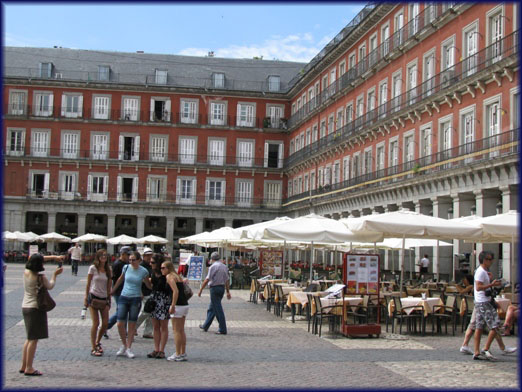 he
so-called "Madrid of the Austrians" gave a Spanish touch
to the forms of Italian Renaissance. This influence can be seen in the
neoclassical structures of the 17th and 18th centuries, such as the Plaza
Mayor, (Main Square) Puerta del Sol, Plaza de la Villa, and the Plaza de
Oriente, where you can visit the magnificent Palacio Real (Royal Palace).
One should visit the Cibeles Fountain, where the beautiful Correos Building
and the Bank of Spain are located. Further along is Puerta de Alcala which
leads to the Retiro Park. This is one of Europe's most beautiful gardens
and also includes the Crystal Palace and a large lake on which one can
take boat rides. he
so-called "Madrid of the Austrians" gave a Spanish touch
to the forms of Italian Renaissance. This influence can be seen in the
neoclassical structures of the 17th and 18th centuries, such as the Plaza
Mayor, (Main Square) Puerta del Sol, Plaza de la Villa, and the Plaza de
Oriente, where you can visit the magnificent Palacio Real (Royal Palace).
One should visit the Cibeles Fountain, where the beautiful Correos Building
and the Bank of Spain are located. Further along is Puerta de Alcala which
leads to the Retiro Park. This is one of Europe's most beautiful gardens
and also includes the Crystal Palace and a large lake on which one can
take boat rides.At the beginning of the 19th century, Joseph Bonaparte undertook the reform of the Puerta del Sol and its vicinity. Thus, The commercial street known as the Gran Vía was built as an east-west avenue. In the 1950's the north-south boulevard called Paseo de la Castellana was extended and modern buildings were erected, housing the major financial institutions. |
||
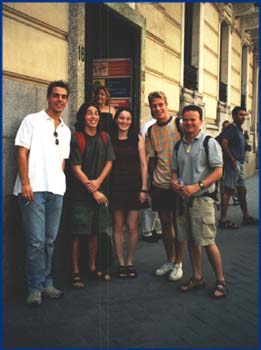 Yet, Madrid remains a city characterized by intense cultural and artistic activity and a very lively nightlife. Madrid seems to combine the very best features of any European city. To Europe, it is called the capital of joy and of contentment with its fully interactive atmosphere. With everything from world famous museums to high fashion shopping; one never runs out of things to do in Madrid. Madrid has a remarkable collection of museums (The Prado, Thyssen Museum, the Reina Sofía Museum, etc) and art galleries. The Prado Museum, with great works of international and Spanish painters from the 12th century to the 18th century, houses Velasquez, Goya and El Greco as undoubtedly the three great attractions. To relax, you can take a stroll through the most popular and authentic of Madrid's parks: the Retiro (119 hectares with 15.000 trees). If you enjoy shopping, Madrid has over 54.000 shops, where you can find everything you want. You will find plenty of boutiques and luxury shops in the Salamanca district. A Sunday morning spent in El Rastro (from 9:00 to 3:00), a picturesque flea market, is quite a unique experience, both entertaining and quaint. |
||
|
Madrid has plenty of typical restaurants where the customer may try the
tastiest and varied specialties of the traditional Spanish cuisine. Typical
of Madrid is the cocido madrileño. There are also Madrid is quite different from any other European capital after dark. Besides theatres, shows, cinemas, concerts, operas, there are plenty of discotheques, music halls, nightclubs, and pubs etc. that go on throughout the night so you can literally "begin your day at night". At night, you can find hundreds of pubs and bars, traffic jams at 4 a.m. Around the city, there a many unique places for going out with its own style. One should never get bored in Madrid, but if you do, remember, Madrid is conveniently located within a maximum of 5 hours by train or bus to any other city in Spain. Avila, Toledo, Segovia, and Aranjuez are only an hour away. |
||
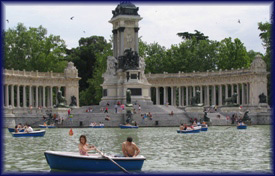 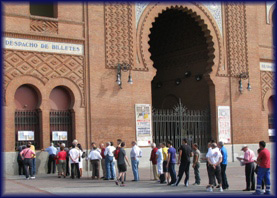 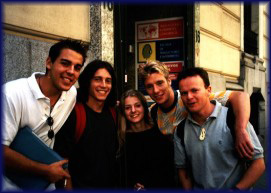 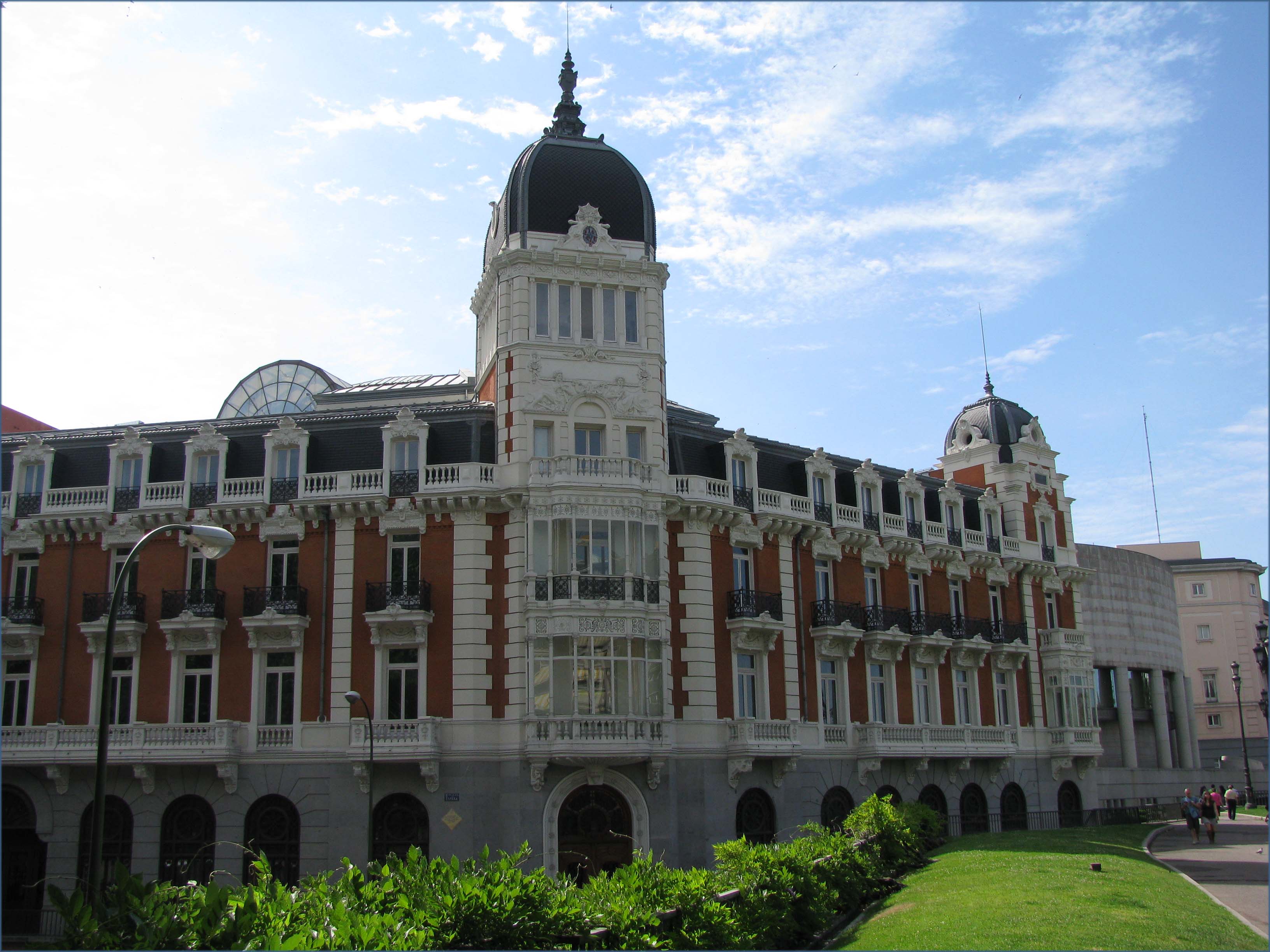 |
||
| School Facilities | ||
 Don
Quijote Centre: is located in the heart of Madrid, close to the famous
Gran Vía, Alcalá and Cibeles, so it is easy to get to and
from any other part of the city. It has an administration office, computer
room, Director of Studies’ office, a phone booth for incoming calls,
a staff room, 13 large bright classrooms and 3 smaller classrooms for individual
classes all with air-conditioning. Don
Quijote Centre: is located in the heart of Madrid, close to the famous
Gran Vía, Alcalá and Cibeles, so it is easy to get to and
from any other part of the city. It has an administration office, computer
room, Director of Studies’ office, a phone booth for incoming calls,
a staff room, 13 large bright classrooms and 3 smaller classrooms for individual
classes all with air-conditioning.
Babylon Centre: is centrally located in the
"Barrio de las Letras" where most of Spain's famous writers from its Golden
Age (16th and 17th century) used to live. |
||
| American College Credits - Bildungsurlaub - CSN - CEELE | ||
| About | Help | Countries | Social | Language | More |
|
|
|
|
|
|
|
Copyright
© 2004-16 NIK|LAS. All rights reserved.
Privacy Policy -
Site Map |